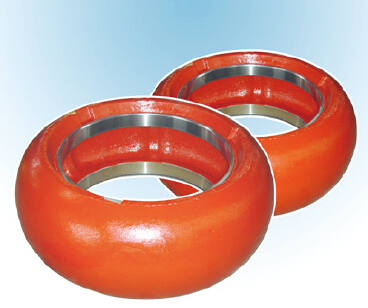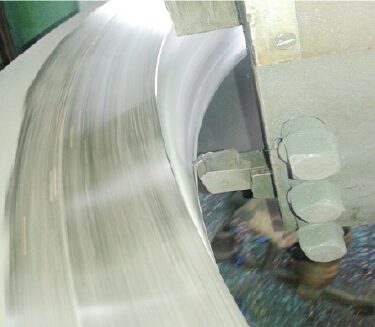Application of cubic boron nitride cutter in the processing of wear-resistant castings
1.We provide 5 years warranty.
2.We promise to replace cartridge without any charge for faucets within 5 years.
3.We have different products suits for different market, of good quality and competitive price.Some of our products have gain IF, REDDOT, GMARK these world prize.
4.We have a strong marketing team can service for your VI system, showroom and catalogue design.
5.We have a strong products department can design the new products together with you.
6.We have over 10years hardware sales experience and can give you professional products solution based on your products structure as for your database.
7.We are an expert in doing concealed shower system, can meet your different demand of this products and can give you different solution for your projects.
8.HOMESHOW do not only sell products, we also sale solutions.
Stainless Steel Shower,Stainless Steel Shower Panels,Stainless Steel Electric Shower,Stainless Steel Rain Shower Yuyao Sanyin Bathroom Technology Co Ltd , https://www.chinasanyin.com
1. Characteristics of cubic boron nitride cutter
Cubic boron nitride (CBN) tools include cubic boron nitride forming tools and cubic boron nitride blades, as shown in Figure 1. The cubic boron nitride forming tool directly welds the cubic boron nitride composite layer to the forming tool, and has the following characteristics.
(1) High strength and wear resistance. CBN micro hardness is about 8000 ~ 9000HRC, second only to diamond 9000 ~ 10000HRC. In addition, CBN tools are much more wear resistant than hard alloys, ceramics and diamond tools, and can be used to machine tough cast iron and steel or other alloys that are strong, hard and heat sensitive.
(2) Good thermal stability. CBN heat resistance can reach 1 400 ~ 1 500 ° C, can maintain the same hardness at 1200 ° C, almost twice as high as diamond. CBN tools have the ability to withstand periodic high temperatures. When used to machine high temperature alloys at high speeds, CBN tools can be cut 4 to 6 times faster than cemented carbides.
(3) Good thermal conductivity. The thermal conductivity of CBN is much higher than that of high speed steel, ceramics and hard alloys, and the thermal conductivity of CBN tools increases with increasing temperature. 
Figure 1 Cubic boron nitride cutter
(4) Strong chemical stability. CBN is chemically inert and stable to acids and bases in both neutral and reducing media. It reacts with carbon at a high temperature of 2000 ° C, so it is very suitable for processing ferrous metals.
2. Application examples
The grinding roller is an important wear-resistant part of the coal mill grinding roller assembly (see Figure 2). The material is BTMCr20, which contains components such as Cr, Ni, Mn and Cu. After the quenching and tempering heat treatment, the hardness of the grinding roller is >58HRC, which makes the processing difficult. The size of the grinding roller is generally 1.5-2.4m, mainly processing the inner hole and the two end faces, usually processed on a 2.5m vertical lathe (see Figure 3). The tool used is developed by Zhengzhou Bote Hard Material Co., Ltd. BTS2800 Cubic Boron Nitride Integrated Sintered Blade. 
Figure 2 Grinding roller wear parts in the coal mill 
Figure 3 Vertical lathe processing roller wear parts
(1) Tool geometry parameter selection. Cubic boron nitride materials have higher brittleness and lower strength, so the rake angle of the tool usually takes γo=-5°~-0°, and the back angle αo=-6°~ -15°. In order to improve the cutting edge strength, the cutting edge angle is generally ≥90°, and the cutting edge of the cutting edge needs to be ground with a negative chamfer. The width of the chamfering edge can be b=0.1-0.3mm, and the chamfering rake angle=-20°~-6°. The knife tip is rounded r=0.2~0.6mm. If the tool nose radius and negative chamfer are too large, the probability of fluttering increases, so when the system rigidity of machine tools, fixtures, tools and workpieces is insufficient, especially when processing slender workpieces, it should not be too large. Tool nose radius and negative chamfer.
(2) Feed quantity selection. Cubic boron nitride tools are mainly used for finishing and semi-finishing, so the amount of knife is generally small, usually below 2mm, and the feed is 0.05~0.4mm/r. Since the tool has a negative chamfer, in order to give full play to the characteristics of the cubic boron nitride tool material, and to meet the processing requirements more economically, the feed amount is generally selected to be larger than the width of the negative chamfer. The attached table is the cutting amount of BTS2800 tool recommended by Zhengzhou Bote Hard Materials Co., Ltd. Refer to the table when machining the wear parts of the grinding roller. The cutting parameters selected are: cutting speed of 80m/min, feed rate of 0.2m/min, and backing knife volume of 0.2mm.
(3) Processing precautions. Before the cubic boron nitride tool is used, the front and back flank surfaces need to be ground to reduce the friction during the cutting process, and at the same time, the straightness of the cutting edge can be improved to prevent abnormal wear of the tool. In addition, the cutting edge quality of the cutting edge should be checked with a magnifying glass of 50 times or more before use to control the serrated edge of the cutting edge so as not to affect the tool life and processing quality.
In addition, although cubic boron nitride tools can withstand cutting temperatures of 1 250 to 1 350 ° C, CBN tools react with water vapor and oxygen in the air at high temperatures (around 1000 ° C) to produce ammonia and boric acid, accelerating the tool. Wear and tear. Therefore, in the wet cutting, avoid using an aqueous solution as the cutting fluid, and an aqueous solution with extreme pressure additives or extreme pressure cutting oil should be used to weaken the hydrolysis.
3. Conclusion
The cubic boron nitride tool has become a new special tool for ferrous metals such as nickel-chromium chilled cast iron and high-chromium cast iron, which is used in the processing of wear parts of coal mill grinding rolls. Practice has proved that CBN tool has high processing efficiency, long tool life and low processing cost, which solves the processing problem of wear-resistant castings and is a technological innovation of material cutting. In addition, the application of CBN tools has promoted the development of the coal mill industry and is worthy of application.